Top 5 Mastering Limiters Tested
Weiss Compressor/Limiter
Flux Elixer
FabFilter Pro L-2
Melda Productions LimiterX
Sonnox Oxford Limiter
Mastering limiters are an important part of mastering in general. They set the output of a signal, as well as help engineers achieve a commercial loudness when needed.
With that in mind, we sought to cover and test 5 commonly used mastering limiters. We’ll cover their functionality, discuss how to achieve limiting with each plugin, and then listen to examples of each with just about the same amount of gain reduction to compare.
Also, it’s important to note that these are listed in no particular order.
So, if you’re looking for a new mastering limiter, or you’re considering purchasing your first one, watch the video embedded above, or read on to find out more.
Also, if you’re an artist or engineer, and you’d like to hear your mix mastered, send it to us here:
We’ll master your track for you and send you a sample of it for you to review.
Weiss Compressor/Limiter
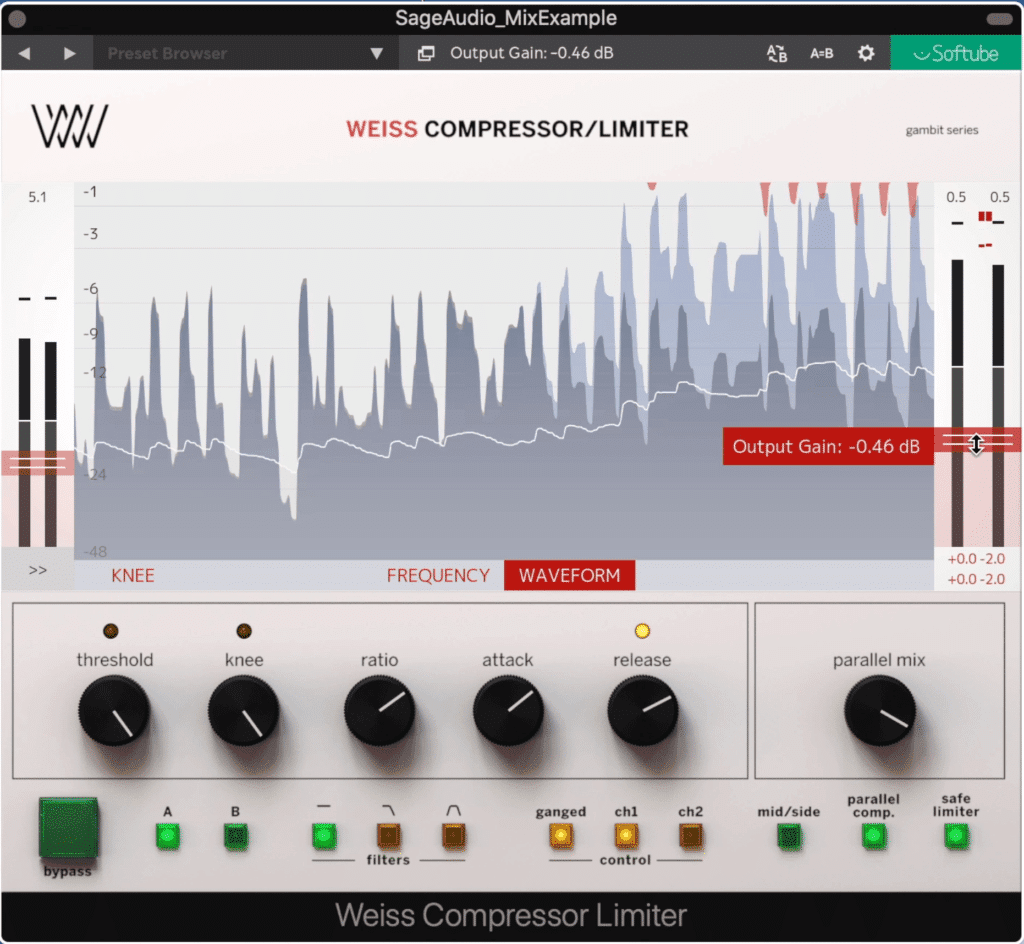
The Weiss Compressor/Limiter is a line for line recoding of the original hardware.
The Weiss Compress/Limier has been around since the 1990s; however, it was only recently that a plugin of the renowned limiter was made available by Softube.
The cost is reasonable at roughly $100 to $200 depending on if it’s on sale.
The plugin’s layout is pretty easy to understand but can become more complex the deeper you dive into the plugin.
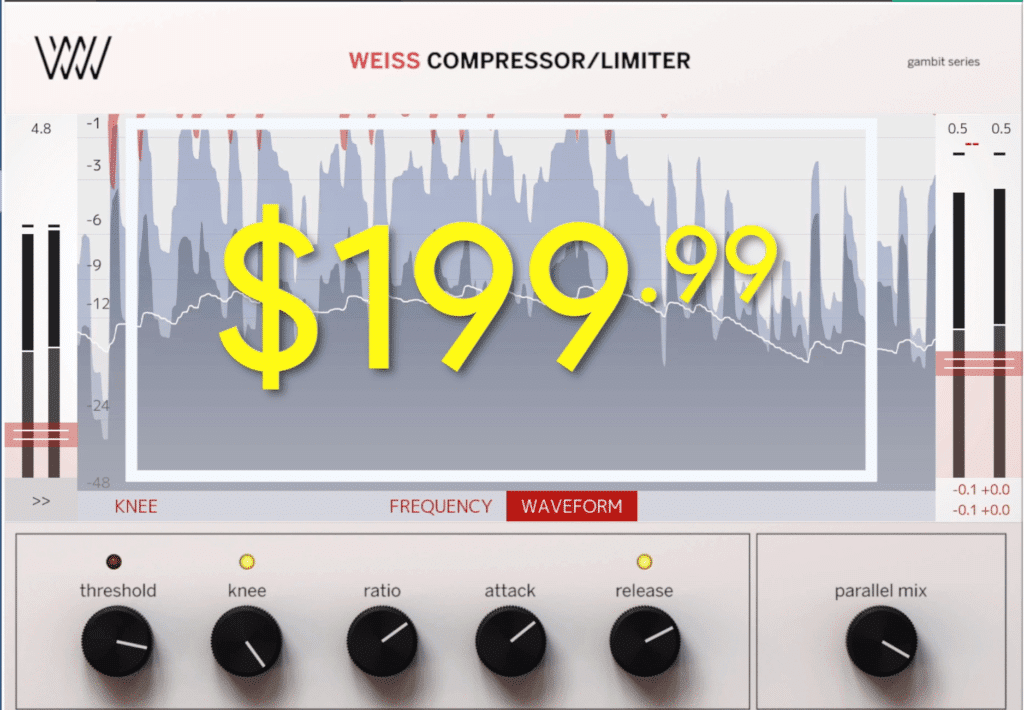
The cost of the Weiss Compressor/Limiter is $199.
On the left is your input gain which automatically enables the limiter once increased enough. The display shows the amount of attenuation, as well as the amplitude of the original and effected signal.
On the right is your output gain , which should be lowered slightly to avoid inter-sample clipping.
If you want, you can see your full frequency response and the knee of your compression. Keep in mind that this knee refers to an additional compressor, not your brick wall limiter.
You’ll notice that once you start affecting your threshold, knee, ratio, and so on, that you get 2 different gain reduction meters on the right. The one further to the left is the gain reduction of the compressor , the one on the right is the gain reduction of your limiter.
So again, this section here, with the threshold, knee, ratio, attack, and release, all have to do with your compressor, not the limiter.
The compressor can be made parallel, and even used to expand the signal if desired.
Furthermore, this compressor can be used to affect the full frequency spectrum, the low range using the low pass filter, or the mid-range using the band-pass filter. This means you can compress one section of the signal , but still limit the full signal.
While looking at the bottom of the plugin you can A B different settings, link the left and right channels or affect them separately, make the compression mid/side, and enable true peak detection on the limiter.
Things get a little more complex in the settings, which are accessed by clicking the arrows underneath the input slider. Here you can affect both your compressor and limiter.
One setting I like a lot is an automatic makeup gain for the compressed signal. You can also set an automatic release time, RMS release times, change the limiter type, and more.
All in all, this compressor is incredibly versatile and offers an unparalleled transparent sound. If you’re looking to heavily compress and limit your master, all while avoided unwanted artifacts and changes to the timbre of your master, this is a fantastic plugin.
For more info on Weiss Plugins, take a look at one of our new videos:
Flux Elixer
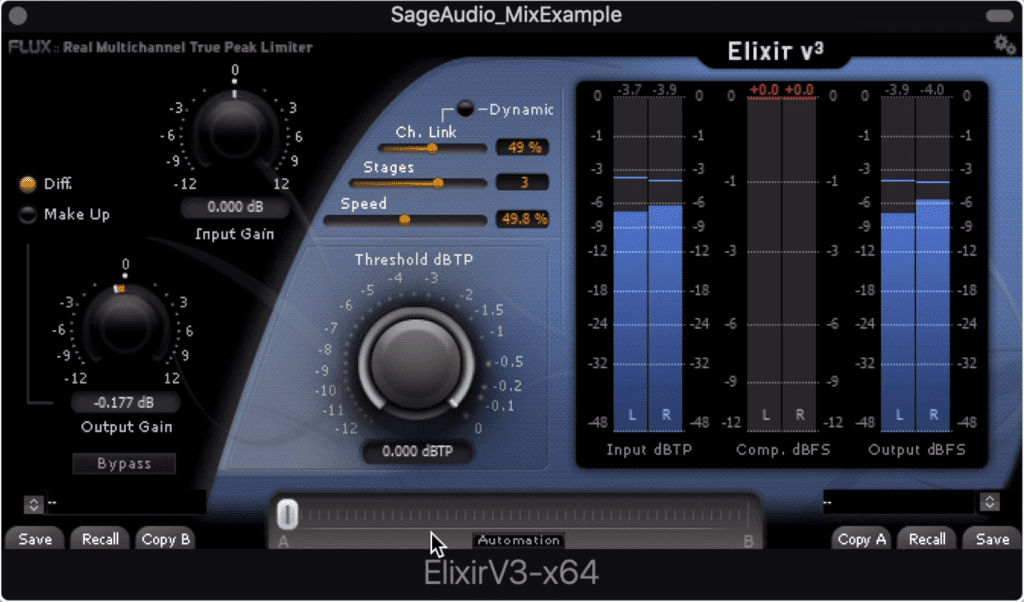
Elixer offers 4 stages of limiting for a more accurate response.
Flux Elixer is a little less intuitively designed than our previous example, but still offers comprehensive limiting nonetheless.
The price ranges from $39 when on sale, to $179 as its original price.
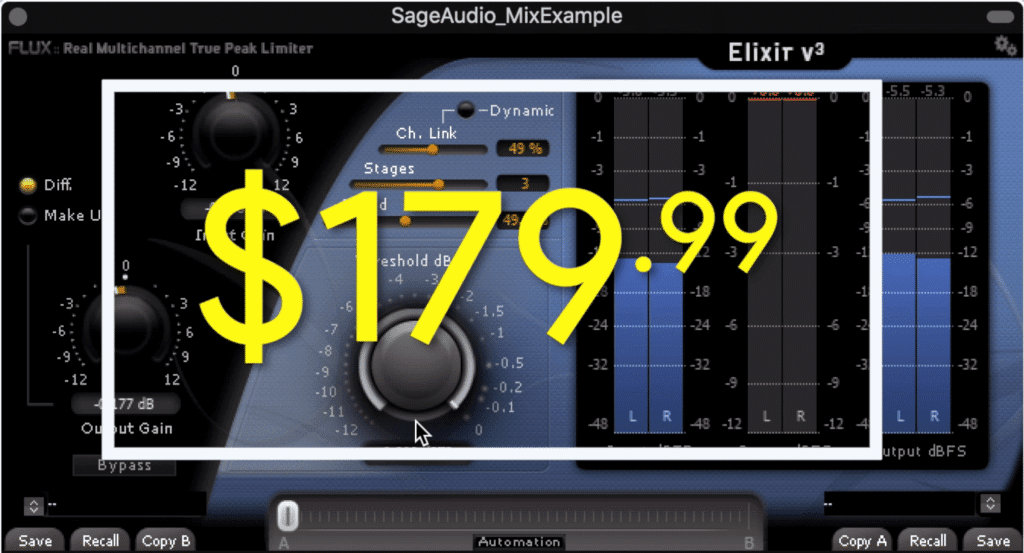
The cost of the Flux Elixer is $179.
To limit the signal, enable Makeup, and then lower the threshold until you begin to compress the signal.
You can also combine this increasing the input gain if your signal is at a lower level, but keep an eye on your meters for potential clipping if you do use this feature.
The Dynamic section makes this plugin unique. The more stages you use, the Moree accurate the compression, and the better sounding the limiting. Increasing the speed reduces lookahead, which will make for a louder master, but with more distortion.
Although I’m not the biggest fan of the plugin’s design or the means by which to attenuate the signal, I do really appreciate the automatic function at the bottom.
This makes affecting all aspects of the plugin incredibly easy if you want to automate the effects during a session or blend the signal between your A and B settings.
FabFilter Pro L-2
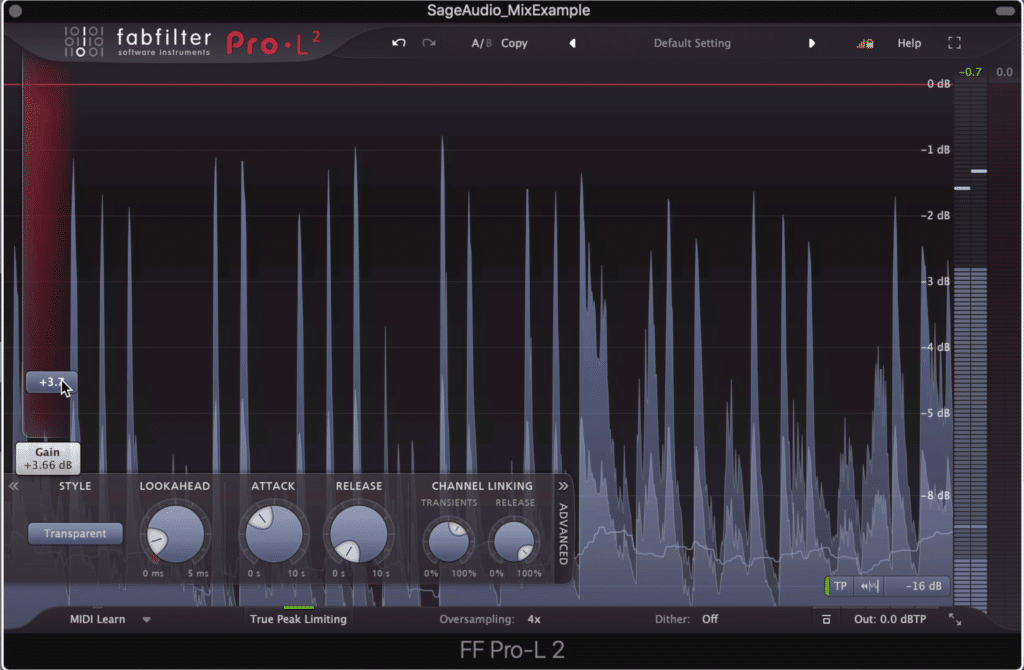
The Pro-L2 offers 8 algorithmic settings for unique timbres and to suit various genres.
The Pro L-2 is a go-to limiter for a lot of engineers, and for good reason. If offers immense flexibility and is really intuitively designed.
It costs roughly $200 but occasionally goes on sale for less.

The cost of the FabFilter Pro-L2 is $199.
We’ve talked about this plugin a few times before, but let’s give it a brief overview.
The input gain is on the left and makes it super easy to start limiting right away.
In the advanced section, you’ll find a really great feature, the algorithm styles. Here you and switch between 8 limiting styles, each offers differing amounts of distortion, perceived loudnesses, and an emphasis on certain frequencies or transient responses.
Lookahead, true peak limiting and oversampling can all be used in tandem to avoid clipping and aliasing distortion. Oversampling goes up to 32x, which you probably won’t need, but it’s available regardless.
The attack is how long before the release time begins, and the release allows you to create loud limiting at lower settings, or a smooth and glued together at longer settings.
The channel linking section lets you link the left and right channels depending on 2 independent parts of the ADSR of the signal, the transient and the release.
The Pro-L2 also offers advanced loudness monitoring, so it’s almost like having 2 plugins in 1.
Lastly, this limiter is the only 1 on this list that can be made full-screen.
Although the price is pretty high, this limiter can suit just about any circumstance, making it a fantastic option for most engineers.
If you want to learn more about the FabFilter Pro-L2 watch this!
Melda Productions MLimiterX
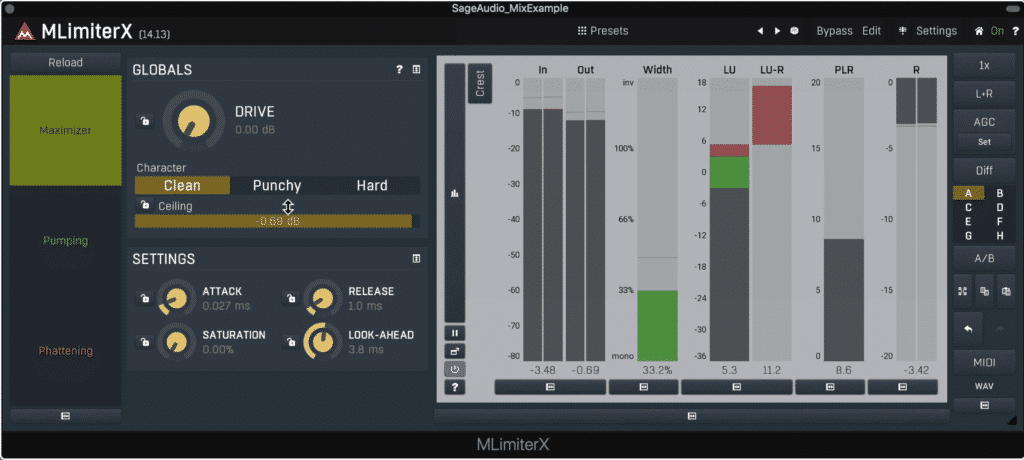
The MLimiterX offers a clean interface with 3 primary settings.
For a straightforward limiter, with an intuitive design, the MLimiterX is a great option.
Priced at $120 or $60 when on sale, this plugin has the potential to be a first choice limiter for a lot of engineers.
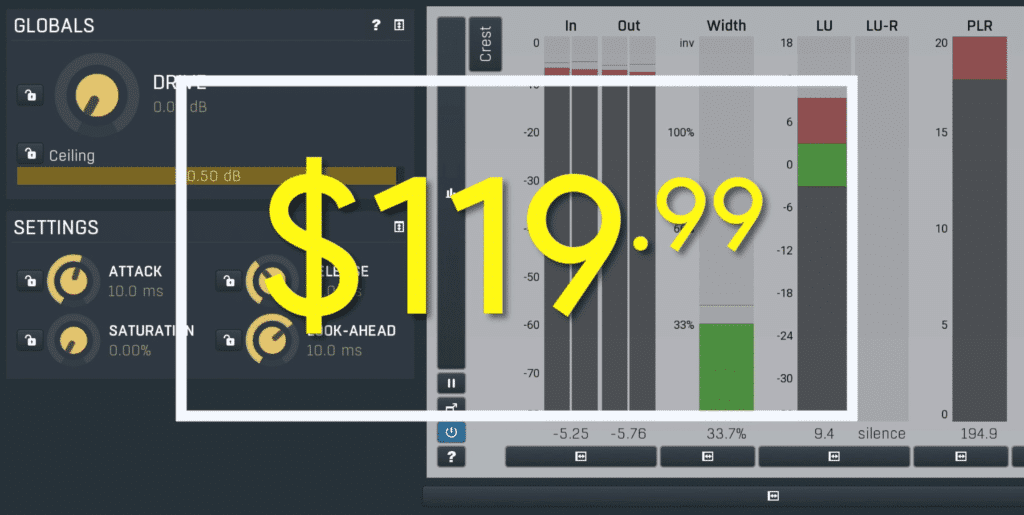
The cost of the MLimiterX is $119.
The limiting is broken up into 3 sections - Maximizer, Pumping, and Phattening, although you’ll most likely stick with the Maximizer section.
The Drive function is how you increase the signal’s gain and engage the limiter. This can be switched between 3 timbres:
- Clean
- Punchy
- Hard
In this window, you can also set the output level for your limiter’s ceiling.
In the settings section, you can affect the attack, release, and lookahead.
What’s more interesting is that you can control the amount of saturation, which means you can introduce additional compression and harmonic distortion to the signal.
In the toolbar section, you can make the processing mid-side, which makes the limiter great for widening the stereo image in a more natural-sounding way.
Lastly, you can increase the oversampling of the plugin to an unreasonable degree.
Sonnox Oxford Limiter

The Oxford Limiter has an aggressive and powerful sound.
The Sonnox Oxford Limiter has a fantastic sound, but can be a little convoluted in its design. It’s also a little expensive and is typical $264 when not on sale.
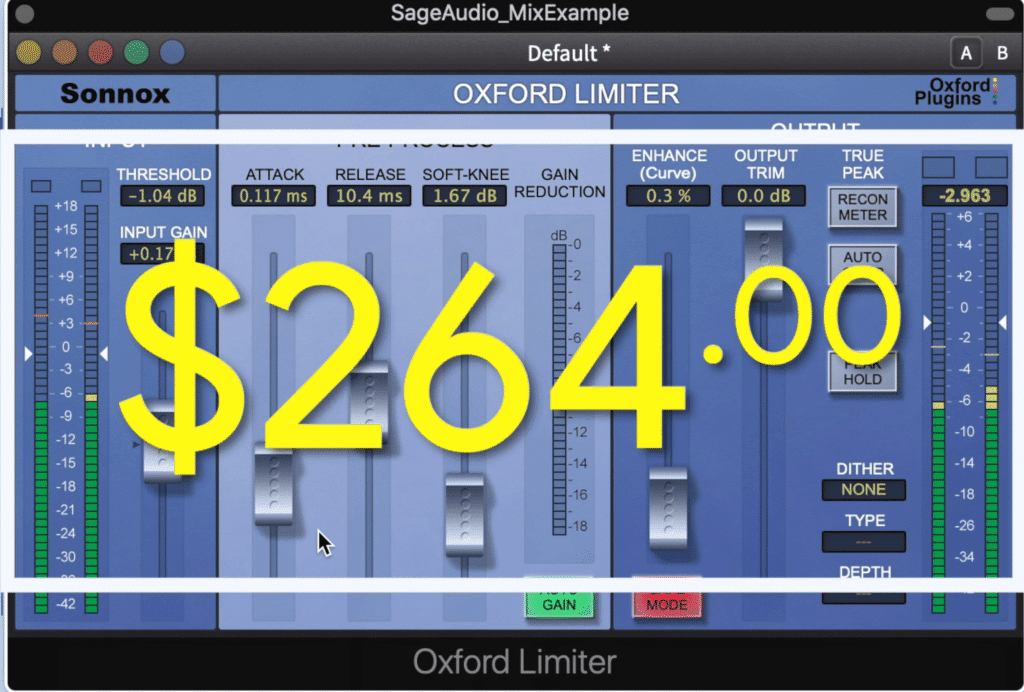
The cost of the Oxford Limiter is $264.
The threshold sets both the point where limiting begins and the output for the plugin.
To engage the limiter, increase the input gain - unlike other plugins, this won’t result in clipping if the threshold is set below 0dB.
The attack determines how quickly attenuation begins, and the release is how long the signal is attenuated for. A longer attack and a shorter release will result in the loudest signal, but at the expense of potential distortion.
The Soft knee setting will result in more compression but will sound more natural, similar to the saturation of an electrical component.
The auto-gain feature is best left enabled and can reduce the perceivability of pumping.
The enhance curve increases harmonic content and compresses the signal slightly. When used at higher levels, the signal can increase in perceived loudness by up to 5dB without actually increasing the signal's overall gain, which is impressive.
Safe mode ensures that clipping distortion doesn’t occur, but you can disable this for a soft-clipping effect.
True peak detection, as well as automatic compensation for these peaks, can be enabled.
What’s really impressive about this plugin is how it internally adjusts the headroom of the signal - meaning peaks that would normally cause clipping will have enough room to pass through the limiter without distortion.
This, like the soft-knee setting, makes this limiter the closest thing to an analog limiter that I’ve found with a plugin.
Conclusion
The limiters listed here are all great for various reasons. They each impart unique sonic characteristics and offer distinct compression and limiting techniques.
The ones you pick depend on the content that you’re trying to limit.
For an incredibly transparent sound, try the Weiss Compressor/Limiter.
For multi-stage algorithmic limiting, try the Flux Elixir.
For a very versatile limiter that can handle most genres, try the FabFilter Pro L2.
For a more simplistic limiter that still offers some great saturation and distinct limiting timbres, go with the MLimiterX.
And for an analog-like sound, try the Oxford Limiter.
Let us know which one you liked the best in the comment section of the video above.
Also, if you’re an artist or engineer, and you’d like to hear your mix mastered, send it to us here:
We’ll master your track for you and send you a sample of it for you to review.




